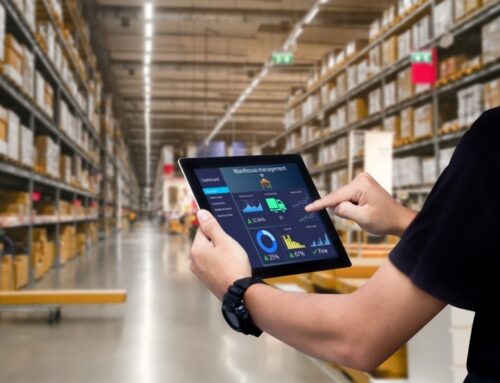Project Description
Out-of-stock items are a big no-no for retailers. Wal-Mart has pointed out that if it can solve 1% of the product out-of-stock problem, Wal-Mart will be able to gain an additional $2.5 billion in sales revenue. In order to do this, retailers have also begun to think about whether they are not aware that the goods are out of stock, or they are not aware that there is inventory in the warehouse, or that the goods are in transit from the factory to the store.
Not just in Wal-Mart, in fact, in the face of modern retail, retailers all face a common problem, that is, how to maximize the transparency of the supply chain and how to make every link in the retail chain “visible”. management”. Fortunately, RFID technology makes this kind of “omni-channel retail” gradually become a reality.
RFID technology is a non-contact tag identification technology and the best means of cargo tracking. What makes it superior to barcode recognition technology is that RFID can dynamically identify high-speed moving objects, and can identify multiple RFID electronic tags at the same time, with a large identification distance. At the same time, because of the uniqueness of the electronic tag identification function, goods can be tracked throughout the supply chain, thereby simplifying all aspects of commodity tracking and obtaining the required inventory visibility in real time, thereby improving inventory management.

Android Mobile UHF RFID Reader QW -830
RFID handheld Reader
Qerwin Handheld
RFID technology is being widely used in the retail industry. Macy’s believes that item-level RFID can reduce inventory costs by $1 billion, specifically describing their “Select Last” initiative, which ensures that any item in any store is available for sale and can be easily located. in order to complete the order.
In addition, the “Future Order Fulfillment Vision Research” released by Zebra Technologies shows that by 2028, 95% of supply chain decision-makers will migrate to RFID-based inventory management. Why are retailers willing to adopt RFID technology? There are no more than three main reasons: first, RFID technology can help companies reduce inventory, second, RFID can improve the accuracy of goods inventory, and third, RFID can bring more efficient operating results. At present, problems such as high inventory costs, low service efficiency, and low information accuracy have caused great troubles to retailers and have penetrated into all aspects of the retail industry. The application of RFID technology is the secret recipe to effectively solve the “pain points” of the retail industry. The application of RFID technology in the retail industry mainly focuses on five aspects: supply chain management, inventory management, in-store merchandise management, customer relationship management and security management.
Inventory management – mainly using fixed or mobile RFID readers (RFID handheld devices) to scan goods entering and exiting the warehouse and on warehouse shelves to improve the efficiency of goods entry and exit, picking, and inventory; to upstream suppliers Improve inventory visibility and timely supply; connect with the in-store shelf automatic replenishment system to replenish inventory in a timely manner to optimize inventory.
Self-service management – through the cooperation of RFID tags and sensors, retailers can update the sales information of goods in real time, monitor the quantity, layout, and dynamics of goods on the shelves to replenish goods on the shelves, achieving planning and execution timeliness. consistency.

rfid tag
Customer management – RFID applications mainly focus on self-checkout and improving customers’ in-store shopping experience.
Security management – RFID applications are mainly focused on commodity theft prevention, followed by using RFID identification codes to replace original passwords to control the use rights of IT equipment or the access rights of certain important departments.
It is worth mentioning that each RFID tag has a globally unique ID number. There is no need to manually read the barcode label of each item. RFID is a more automated technology that can be processed without adding additional labor costs. On the basis of this, it greatly improves efficiency and improves supply chain transparency.
For retailers, RFID can also be used as an information carrier to establish an information platform based on network communication, system integration and database application technologies to realize every step of the entire industry chain from production, processing, storage, transportation, to terminal consumption. records of each link. At present, the new retail wave is sweeping across, and China’s retail industry is reshaping its landscape. Different from the old model of traditional retail, “omni-channel retail” and “customer purchasing interactive experience” are becoming two key elements of modern retail. They are also the core of RFID technology’s ability to provide high added value to retail companies. Excellent RFID retail The solution can effectively help every link of the complete chain of goods from production, warehousing, logistics to sales, and support the digital transformation of the retail industry.




